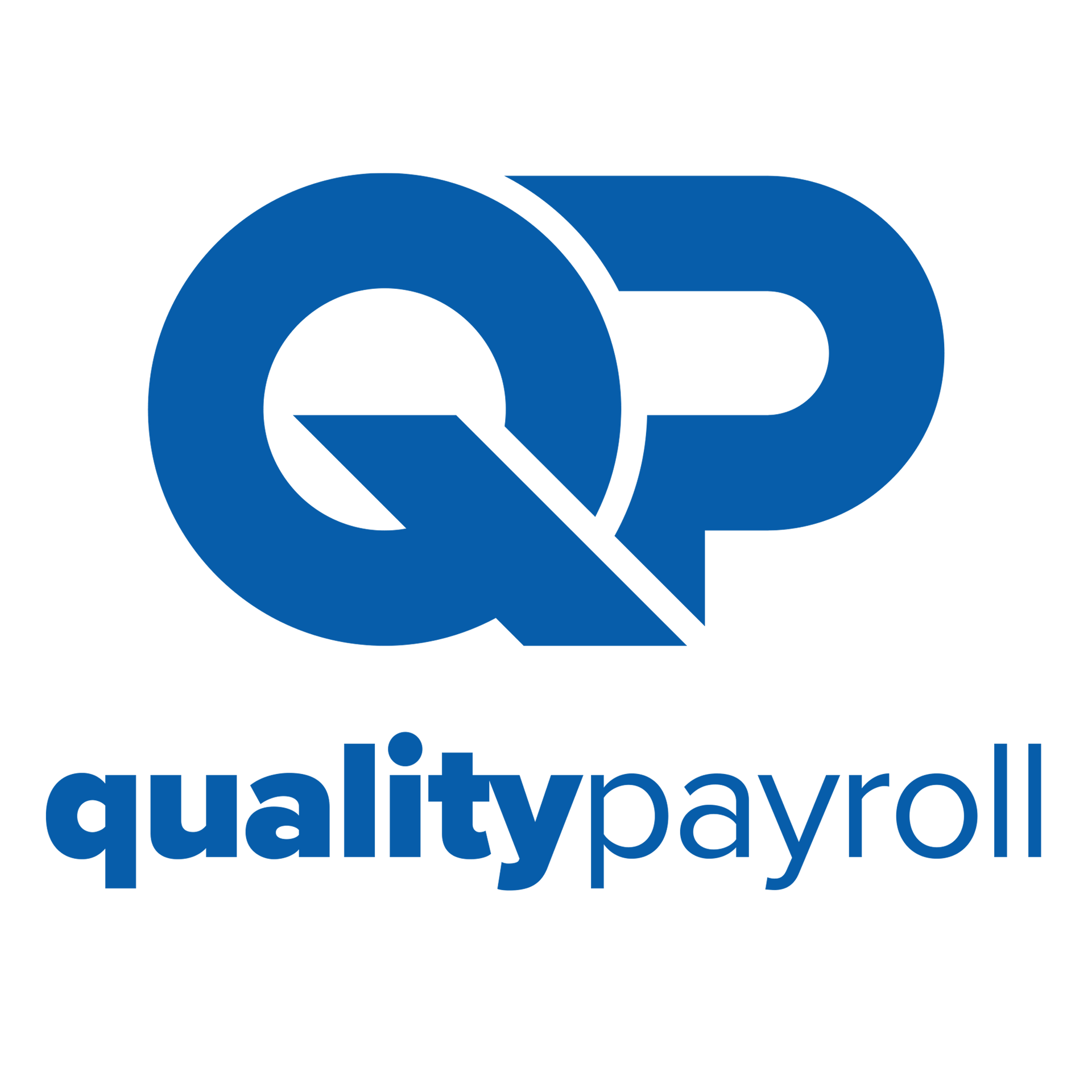About Us
Here at Quality Payroll, we offer a comprehensive suite of payroll, bookkeeping, human resources, and benefits administration services tailored for small businesses. We address an array of challenges you are experiencing such as, compliance, regulation, and resource allocation, allowing you to focus on your core business activities. With a client-centric approach, we serve as your strategic partner, ensuring each administrative detail is meticulously managed.
Testimonials
Recent Posts

A streamlined payroll process is the backbone of any successful business. At Quality Payroll & Benefits , helping clients maintain accurate, timely payroll is our priority. One of the most effective ways to achieve this is by developing a comprehensive payroll calendar—a strategic tool that ensures your employees are paid on time, tax obligations are met, and compliance risks are minimized. In this guide, we’ll walk you through the essential steps to building a payroll calendar, key dates to remember, and best practices for simplifying your payroll process. Why a Payroll Calendar Matters Organizing payroll might seem straightforward, but even small errors or missed deadlines can lead to compliance issues, unhappy employees, and costly penalties. According to the American Payroll Association , payroll errors can cost employers up to 1.2% of their total payroll. A detailed payroll calendar helps prevent these mistakes by mapping out every crucial date and task, creating a proactive workflow that minimizes last-minute scrambles. Key Dates to Include in Your Payroll Calendar A robust payroll calendar should encompass more than just paydays. It must account for tax deposit due dates, quarterly and annual tax filings, benefits processing, and other key milestones. For instance, federal tax deposit schedules can vary depending on employer size and deposit frequency, which the IRS outlines here . Some of the most important dates to include are: Pay Period End Dates : Knowing when each pay period closes is essential for accurate time tracking and payroll calculations. Pay Dates : Schedule when employees will receive their wages, whether weekly, biweekly, semimonthly, or monthly. Federal Tax Deposit Deadlines : These can be semi-weekly or monthly, depending on your company’s deposit schedule. Missing these can result in significant fines. Quarterly Tax Filings : Forms like 941 for federal income tax and FICA are due after each calendar quarter. Annual Filings : W-2 and 1099 forms must be distributed to employees and the IRS by January 31 of each year. State and Local Requirements : Be sure to factor in any state-specific payroll tax deadlines or local requirements. Benefit Contribution Deadlines : Include cutoff dates for 401(k) contributions, health insurance premiums, and other deductions. Steps to Building a Detailed Payroll Calendar Start by reviewing your company’s pay schedule and list all relevant deadlines for the year. Use a digital calendar or payroll software to input these dates and set up reminders in advance—ideally, at least a week before each due date. This provides a built-in buffer for unforeseen delays or last-minute changes. Integrate cross-departmental responsibilities as well. For example, HR should update the payroll team regarding new hires or terminations, while accounting should confirm the availability of funds for each payroll run. Collaboration ensures that no critical step is overlooked. Lastly, communicate your payroll calendar to your team. Sharing this schedule with relevant staff fosters transparency and allows employees to plan accordingly, reducing payroll-related inquiries. Leveraging Technology for Payroll Management Modern payroll systems can dramatically reduce the administrative burden of managing key dates. Tools such as automated reminders, real-time notifications, and cloud-based scheduling are now industry standards. According to a 2023 survey by Deloitte , 74% of organizations that adopted digital payroll solutions saw significant reductions in payroll processing errors. Using payroll management software not only automates reminders for upcoming deadlines but also helps ensure compliance with changing regulations. Choosing a provider like Quality Payroll & Benefits means you’ll have access to integrated tools that sync with tax calendars, benefits administration, and direct deposit schedules, keeping your payroll operation smooth and efficient. Staying Updated with Payroll Legislation Payroll requirements are subject to change at both federal and state levels. New tax laws, wage regulations, and reporting standards can affect your payroll calendar. For instance, the U.S. Department of Labor regularly updates guidelines on pay frequency and wage standards. Failing to stay informed can result in missed deadlines or non-compliance. Subscribe to trusted payroll and HR newsletters, join professional organizations, or partner with a payroll service provider that monitors legislative updates for you. This proactive approach ensures your payroll calendar is always aligned with the latest requirements, giving you peace of mind and protecting your business. Best Practices for a Seamless Payroll Process Beyond simply marking dates, consider these best practices to enhance your payroll workflow: Set Multiple Reminders : Use both digital and physical reminders to keep key dates top-of-mind. Review and Reconcile : Regularly audit your payroll data for discrepancies, especially before major deadlines. Backup Documentation : Store all payroll records securely and back them up regularly to avoid data loss. Plan for Holidays and Emergencies : Adjust your payroll calendar for federal holidays, and have contingency plans for unexpected disruptions. Educate Your Team : Provide ongoing training on payroll procedures, especially when new software or regulations are introduced. Empower Your Business with a Smart Payroll Calendar A comprehensive payroll calendar is more than a schedule—it’s a safeguard against compliance issues, a roadmap for timely payments, and a foundation for a positive workplace culture. By leveraging technology, staying current on legislation, and adhering to best practices, you set your business up for long-term success. If you’re ready to streamline your payroll process, Quality Payroll & Benefits is here to help. Explore our services or get in touch with our team to discover how we can simplify your payroll management—so you can focus on what matters most: growing your business.

Payroll has come a long way from meticulous spreadsheets and manual data entry. As software innovations accelerate, even small businesses can move toward automated tools that streamline much of their financial management, effectively reducing stress and increasing accuracy. Because the day-to-day tasks of running a company can be overwhelming, many owners look to new technologies to simplify how they pay employees, calculate taxes, and track vacation days. These trends are fundamentally reshaping how payroll is processed and managed, and understanding them may give your business a competitive edge—saving time, fostering compliance, and promoting efficiency. The Rise of Automated Payroll Systems Automated payroll systems have taken center stage by removing many of the tedious manual steps associated with compensating employees. Rather than sifting through time cards, paper ledgers, and complex formulas, business owners can now rely on software that maintains records, calculates salaries, and processes tax withholdings. Data from GoCordless indicates that companies implementing automated platforms can reduce payroll processing errors, which is especially significant for small businesses where every penny counts. Modern payroll solutions often integrate with other critical systems, such as accounting software, making it simpler to generate real-time insights. For instance, you can see labor expenses alongside revenue projections, facilitating quick yet informed financial decisions. Automated solutions can also handle direct deposits, drastically reducing paperwork and postage costs while accelerating the speed at which employees receive their pay. The Flexibility of Mobile Apps and Cloud-Based Solutions Technology has not only made payroll more accurate but also more mobile and accessible. Cloud-based platforms deliver benefits far beyond merely accessing a web browser for your payroll tasks. Many providers offer mobile apps that let you review, edit, and approve timecards wherever you are. This convenience supports small business owners who might otherwise be tied to a desk and provides instantaneous updates for team members operating in different locations. Small to mid-sized businesses are increasingly adopting cloud solutions for human resource functions like payroll. Some reasons include simplified updates—where the vendor ensures the platform is current with changing tax laws—and built-in data security that often meets or exceeds traditional on-site server protection. Embracing the cloud brings an added layer of agility, empowering you to adapt to staffing changes, new tax rules, or expansions into other states without overhauling your entire payroll foundation. Choosing the Right Software Package Selecting the most suitable payroll software can feel daunting with so many products on the market. Some options cater specifically to startups with only a handful of employees, while others target larger enterprises with hundreds on the payroll. To narrow your choices, it helps to first map out your business requirements. If you manage a remote workforce, you want an interface that can handle varying time zones. If you foresee a quick hiring trajectory, look for packages that scale easily in terms of user capacity and features. It is equally worthwhile to consider how the payroll solution will integrate with your current technology stack. A seamless connection with your bookkeeping or point-of-sale systems reduces data duplication and the risk of errors. Additionally, look for a vendor that provides robust customer support and clear documentation; even a minor glitch can become a major hassle if you are unable to resolve it promptly. The software’s user experience also matters—intuitive dashboards and simple navigation let you or your HR staff process payroll confidently without extensive technical expertise. The Emergence of Artificial Intelligence in Payroll Artificial intelligence (AI) has already made an impact on customer service (think chatbots) and logistics (consider automated routing), and it’s now inching into payroll territory as well. While full-scale AI adoption in payroll remains in its early stages, certain systems already use smart algorithms to detect anomalies, such as unusual spikes in overtime or incorrect tax withholdings. Early identification of such irregularities can lower the likelihood of costly compliance penalties. AI-driven software also refines forecasting capabilities by analyzing data points across employee attendance, seasonal trends, and past payroll expenses. This technology allows businesses to anticipate workforce costs more effectively, which is particularly useful for companies with cyclical demands. According to an article in Science Direct , entrepreneurs who employ AI-driven analytics often see better budget planning and gain insights into staff allocation. As the technology matures, we can expect even more sophisticated AI features to automate aspects of payroll currently requiring manual oversight, such as benefits reconciliation and customized wage structures for different job roles. Making the Transition to Modern Payroll With many options available, it’s easy to feel hesitant about transitioning to an automated or AI-driven payroll system. The rewards, however, can be substantial if you approach the process methodically. Begin with a thorough review of your existing payroll workflow—identify bottlenecks where manual processes slow productivity or create inaccuracies. Consult with stakeholders, including any external accountants or HR professionals, to define a realistic wish list of features. Before committing to a vendor, confirm that their solution aligns with compliance rules in your region. Laws vary, and fines can be steep if you fail to calculate taxes correctly. If you’re scaling up, look for flexible software that increases capacity without requiring a complete system overhaul. Run pilot tests with a small group of employees to evaluate whether the platform performs smoothly. Once you’re satisfied, confirm your go-live date, train your staff, and encourage employees to explore any self-service features for tasks like updating direct deposit information. Benefits in Accuracy and Time Savings The most obvious advantages to adopting advanced payroll technology revolve around quick, accurate payment processing. When payroll runs like clockwork, you build trust with employees who appreciate receiving consistent paychecks, free from any last-minute adjustments. Accurate record-keeping also reduces the headache of reconciling any year-end tax documentation, giving you and your financial team more time for strategic planning. Being able to finalize payroll with minimal manual intervention is a game-changer for small to mid-sized businesses. Time previously spent on data entry and calculating withholdings might now be freed up for other tasks, such as marketing campaigns or product development. Some businesses find that automation can save several hours per pay period, translating into tangible resource gains throughout the fiscal year. Transforming Your Business With Next-Generation Payroll Solutions As the landscape of payroll technology expands, forward-thinking businesses stand to benefit from unparalleled efficiency, enhanced precision, and a renewed focus on growth. Embracing solutions that incorporate automation, mobile access, and AI can free you from time-consuming, repetitive tasks. The end result goes beyond running payroll faster—you will likely notice that the operational clarity afforded by modern tools fosters smarter decision-making across your entire organization. If you are interested in implementing cutting-edge payroll technologies for your business or want customized advice on transitioning to a new platform, visit our contact page at Quality Payroll & Benefits. We’re here to guide you at every step, from evaluating your current workflow to selecting the right software that aligns with your unique needs. Feel free to explore more about our services on the Quality Payroll & Benefits website and discover how advanced payroll solutions can streamline your operations for long-term success.

Navigating the complexities of payroll tax withholdings is a crucial responsibility for small business owners, especially those in Utah. These withholdings involve the amounts deducted from employees' wages to cover federal, state, and local taxes. Ensuring accurate withholdings is vital for compliance with tax regulations and avoiding penalties associated with underpayment or late payment. Understanding the nuances of tax withholdings requires differentiating between federal, state, and local obligations. Federal withholdings fall under the jurisdiction of the Internal Revenue Service (IRS), while the Utah State Tax Commission manages state withholdings. Local tax withholdings can vary significantly depending on the municipality, such as in Sandy or Hurricane, UT. Accurate tax withholding is essential for maintaining compliance and preventing potential fines. Federal Tax Withholdings Explained Federal tax withholdings form a foundational aspect of payroll management for small businesses. These withholdings are determined by federal tax codes, which establish tax brackets for different income levels. The tax brackets dictate the percentage of an employee's income that must be withheld for federal taxes. A key tool in determining federal tax withholdings is the IRS Form W-4. Employees fill out this form to indicate their tax situation, which employers use to calculate the appropriate withholding amount. For instance, if an employee claims fewer allowances, more taxes will be withheld from their paycheck. To illustrate, consider an employee earning $50,000 annually. Depending on their filing status and allowances claimed on the W-4, the withholding amount will vary. By using the IRS tax tables, employers can determine the exact amount to withhold. This process ensures that employees do not owe a significant amount during tax season and helps avoid underpayment penalties. State Tax Withholdings in Utah Utah has its own set of requirements for state tax withholdings, which businesses must adhere to. The Utah State Tax Commission oversees these regulations and provides resources to help business owners comply. Employers in Utah are required to withhold state income taxes from their employees' wages, similar to federal withholdings. Recent updates to the state tax codes may impact payroll processes. Changes in tax rates or withholding calculations can affect how much employers need to withhold. Staying informed about these updates is crucial for compliance. Business owners can find additional resources and guidance on the Utah State Tax Commission website. Navigating Local Tax Withholdings Local tax withholdings present unique challenges for small businesses, especially in cities like Sandy and Hurricane, UT. Each locality may have different tax codes and requirements, making it essential for businesses to stay informed. The variability in local tax regulations can be daunting. Small businesses must be proactive in understanding these differences to avoid compliance issues. Strategies such as subscribing to local tax bulletins or attending workshops can be beneficial. Local chambers of commerce or business associations often provide valuable resources and support to help business owners navigate these complexities. Common Mistakes in Tax Withholding Errors in payroll tax withholdings are not uncommon among small businesses. One frequent mistake is miscalculating the withholding amount, which can lead to significant penalties. Another common error is failing to update withholding amounts when employees' tax situations change, such as after a marriage or the birth of a child. The consequences of incorrect withholdings can be severe, including fines and interest on unpaid taxes. To avoid these pitfalls, businesses should double-check their calculations and ensure accuracy. Consulting with tax professionals can provide insights into best practices for managing payroll tax withholdings effectively. Strategies for Streamlining the Tax Withholding Process Streamlining the payroll tax withholding process can save time and reduce errors for small businesses. One practical strategy is utilizing payroll software or services that automate calculations and updates. These tools can significantly ease the burden on business owners by ensuring accuracy and compliance. Regular audits and reviews of the payroll process can also help maintain compliance. By periodically checking withholding amounts and staying updated on tax law changes, businesses can avoid potential issues. Seeking professional advice from payroll experts can be invaluable in navigating the complexities of tax regulations. Practical Examples and Case Studies Real-world examples can provide valuable insights into effective tax withholding management. In Sandy and Hurricane, UT, several small businesses have successfully managed their payroll processes by implementing strategic practices. For instance, a local retail store in Sandy streamlined its payroll by adopting comprehensive payroll software, which reduced errors and improved compliance. Conversely, a restaurant in Hurricane faced challenges due to incorrect withholdings, resulting in penalties. Learning from this experience, the business owner sought professional assistance and adopted a more rigorous review process. These examples highlight the importance of effective payroll management and the lessons learned from both successes and challenges. The Role of Professional Assistance Seeking professional assistance for payroll and tax withholdings offers numerous benefits for small businesses. Payroll and benefits administration services can alleviate the burden on business owners by handling complex tax regulations and ensuring compliance. Having a dedicated team to manage payroll processes can prevent costly mistakes and allow business owners to focus on their core activities. Ongoing support and advice from payroll professionals can also help businesses stay updated on tax law changes and navigate any challenges that arise. Importance of Staying Informed Remaining informed about changes in tax laws and regulations is crucial for business owners. Tax codes and withholding requirements can change, and staying updated is essential for compliance. Subscribing to newsletters from tax authorities or attending seminars can be effective ways to stay informed. Benefits of Using Payroll Software Investing in payroll software can significantly streamline the process of managing tax withholdings. These tools automate calculations and updates, reducing the likelihood of errors. By using payroll software, businesses can ensure that they are compliant with the latest tax regulations. Understanding Employee Classification Correctly classifying employees is critical for accurate tax withholdings. Misclassification can lead to incorrect withholdings and potential penalties. Business owners should familiarize themselves with the criteria for classifying employees versus independent contractors. The Impact of Tax Withholdings on Cash Flow Tax withholdings can have a significant impact on a business's cash flow . Proper planning and management of withholdings can help businesses maintain healthy cash flow. Understanding how withholdings affect cash flow is essential for effective financial management. Grasping the intricacies of payroll tax withholdings is essential for small businesses in Utah. By staying informed about federal, state, and local tax requirements and seeking professional assistance when necessary, business owners can ensure compliance and avoid potential penalties. Implementing strategies such as using payroll software and conducting regular audits can streamline the process and reduce errors. Ultimately, effective management of tax withholdings contributes to the financial health and success of a business. For expert guidance and support in managing your payroll and benefits, reach out to Quality Payroll & Benefits today . Our team is dedicated to helping you navigate the complexities of tax regulations and ensure compliance, allowing you to focus on your business's core activities.


